|
"You Americans are always concerned about your weight. Even if you are thin, you think you are overweight. If you have a big stomach, you're embarrassed and want to lose weight. You even have operations to stop you from eating too much. In Italy if I get too thin a Nonna will stop me on the street and say 'You need to eat more. You’re too thin. Also you’re dog is too thin. EAT MORE and feed this poor dog!'"
0 Comments
 Map of the Cinque Terre Map of the Cinque Terre Especially in the peak tourist months, the Amalfi Coast is bumper to bumper tour buses and its towns are chock full of tourists stepping on one another's toes. I wouldn't dream of driving the Amalfi Coast in summer--it was crazy enough in October when we were there! And I wouldn't want to rely on the sporadic local buses where you'd have to wait for an hour just to get on, and when you do you'd be standing for an hour or more just to get to your destination... a blood-curdling drive going around cliff hanging curves at the blazing traffic jam speeds of 6 miles an hour. Well, I have a suggestion... Instead of going to Amalfi, go where the tour buses aren't dumping off thousands of tourists--Cinque Terre in the northern region of Liguria! Cinque Terre literally translated means Five Lands, a reference to it's five towns: Monterosso al Mare, Vernazza, Corniglia, Manarola, and Riomaggiore, and even it isn't technically part of the Five Lands, I would include the wonderful port town of Portovenere just to the east with its naturalized island of Palmeria just opposite the town. The rugged coastline rivals the Amalfi Coast in beauty and its five villages along with the surrounding cliffs are part of the Cinque Terre National Park and is a UNESCO World Heritage Site. The advantage of visiting Cinque Terre is that cars--as well as tour buses--can't reach the villages. They are only accessible by local trains, by foot paths (old donkey paths) running between them or by boat-taxis and ferrys. While the Amalfi Coast gets bus tours from cruise ships and has more tourists because of its proximity to Naples, Sorrento, Capri and Pompeii, the Cinque Terre villages stand on their own. But, if you are staying in Cinque Terre, there are very doable day trips to Genova, Portofino, Pisa and even Florence if you have the extra time to take a train or rent a car. Tourism in the villages is more laid back than Amalfi. Here you will find more low modest hotels and rental apartments and more B&Bs than in Amalfi where chic Luxury hotels abound. And although Amalfi has some great hiking with its Sentiero degli Dei (Path of the Gods) high above the towns and villages of the Coast Road, the Cinque Terre has its paths connecting each village... and they are wonderful walks with gorgeous views. Keep in mind however, that these walking paths--although well paved and often wide promenades--have lots of people walking them in the high season. They are also rugged in terms of changes in altitudes--lots of ups and downs, so you'd better be in good shape. I wouldn't recommend Cinque Terre for seniors or people with heart or breathing difficulties. In Amalfi, the Path of the Gods is for more serious hikers with some easier parts paths mixed in all throughout the peninsula, but most of the tourists are going to the chic towns of Positano and Amalfi Town--the place is very touristy. When visiting Italy in early spring or fall, you might have better weather in the south, but by American standards, the weather is still warm enough to enjoy a slightly off-season trip to Cinque Terre. In later October the rains and some winds start to come, so plan your trip later in the month. If you want to swim in the sea, plan your trip at the shoulder of the high season. If you don't mind more crowds, humidity and heat, plan your trip in summer. Personally, I would also squeeze in some time in Portovenere and perhaps have a water taxi drop me off on the Isola Palmeria--a national park with wonderful naturalized beaches that look back at the the town. There are hiking tails on the Island with amazing views and lots of nature to enjoy. Of course, you might not want to hike between all of the towns... You will want to take the trains also. The Cinque Terre trains connect six stops: La Spezia (just down the coast to the east of Cinque Terre, it's where you would make connections to other major Italian cities) the official "Five Lands" of Riomaggiore, Manarola, Corniglia, Vernazza, and Monterosso, and the town of Levanto. If you're coming from elsewhere in Italy, you would have to connect to either Florence, Milan, or Venice and then move on to La Spezia to connect with the Cinque Terre train system.From La Spezia to Riomaggiore is about 10 minutes, and then roughly 5 minutes between each town thereafter. The trains run an irregular, perhaps some would say unreliable schedule, but you can usually catch a train every hour or so. You can also travel between towns by water taxi which leave every hour or so. 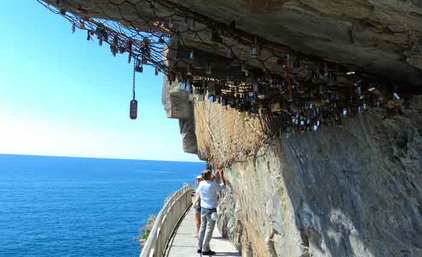 Along the Via dell'Amore, lovers place locks and throw the keys into the sea... Along the Via dell'Amore, lovers place locks and throw the keys into the sea... The simplest walks between towns are between 3/4 of a mile and 2 miles so you might plan on walking through all Five Lands... The Monterosso to Vernazza path is the most demanding and can easily take about two hours, while the By comparison, the Via dell'Amore which clings to the cliff above the sea, is all paved and relatively flat and can be walked in as little as 30 minutes. Bottom line... Cinque Terre is a bit less touristy than the Amalfi Coast, has less of that chic element and more of the backpacker feel, and is more suited to serious hikers and walkers looking for a more intimate getaway. --Jerry Finzi If you enjoyed this post, please, please share it with your friends and help make Grand Voyage Italy more popular than ever... We had over 700 page views just yesterday! Grazie!  The Coolpix P610 The Coolpix P610 Ok, so I've dropped the ball a bit here. I admit it. After all, I've been an advertising photographer for over 45 years and I haven't even talked shop about cameras on Grand Voyage Italy. Well, things are going to change... here's my first camera review, but look for more posts on other cameras and photo techniques and tips for travel photography in the near future... When I planned our Italy voyage I knew I didn't want to be loaded down as a pro photographer with my larger camera kit and multiple lenses. This was a different kind of trip for us--to discover our roots. I didn't want to feel like I was working, but yet I wanted to bring enough photo-power to capture the best images of this trip of a lifetime. We decided on two cameras, the Nikon P530 (42X zoom) and the P600 (60X zoom). These were affordable (one more so than the other) and considering the lenses were integrated into the camera body (not removable), I wanted two similar cameras so we always had a backup. As it turned out, the choice was perfect for us. The bodies on these cameras is smaller--much smaller--than my hefty D7000 (a half pound difference!) Lisa could tuck hers into her "mule bag" and I fit mine comfortably into my messenger bag. After all, I didn't want to advertise my presence as "photographer". The cameras were easy to use, lightweight (especially with my wrist strap) and the fact that the lenses on these cameras are in the "Super Zoom" category meant we didn't have to miss shots or carry a traditional DSLR with a variety of lenses. So, now there is a new model that I'd like to talk about... The Nikon Coolpix P610 The features of the P610 can't be beat... 16 megapixel (full resolution), 60x optical zoom lens, GPS, built-in Wi-Fi, "Near Field Communication" compatibility (NFC), and Full HD video. Combine this with one of my favorite features... the flip out Vari-angle display. This is handy for taking shots looking up from ground level or holding the camera at arm's length over your head, as when taking shots over a crowd. The lens is still a Super Zoom at 60x, just like our P600. That's equivalent to having a range from 24 – 1440mm in a traditional 35mm format camera! There's even vibration reduction for when you're zoomed way in (though, again, shut this feature off to prevent unnecessary battery drain when you don't need it.) If you do a lot of zooming-in at distant objects, I'd recommend packing a tripod, or save space while traveling and get a sturdy mini tripod like the Cullman Magnesit Copter. I brought one along and got amazing steadiness out of it. The other amazing and useful feature of the P610 is the wide range of ISO... 100 - 12,800! This is fast enough to take decent photos in a dark room or a dark street. Of course, you should only use these higher ISOs when you absolutely need them (all high ISO settings on all cameras trade off capturing a well exposed picture with lessened quality), but it's great to know they are there (like when you want to capture the details of a fresco inside a cave in Puglia without flash). Most shots outdoors would do best with an ISO 100 setting for the best quality image, but to prevent hand hold camera shake (if you've just come from a point and shoot camera) perhaps a setting of 200-400 is a good compromise.
The communication features are great also. Our P600 had Wi-Fi and we used it several times while in Italy to transfer shots to our phone so we could then Email them to friends. Basically, you connect your phone (or in our case, our Kindle) to the camera's Wi-Fi hotspot--very easy to do. We also used this feature to dump shots to our phone or Kindle and then back them up to Dropbox. Very handy to have. The Near Field Communication feature is useful if you have a NFC enabled smart phone... tap your phone to the camera and it instantly makes the Wi-Fi connection. Another very techy feature is that the LCD display automatically switches to the internal electronic viewfinder when you hold the camera up to your eye--and vice versa. On the P600 I have to press a button when I want to switch finders. I personally see little use for the GPS feature. This has to be turned on from the menu and will tag photos with lat/long coordinates. Useful for posting photos on Panoramia and Google Earth, I suppose. It also has a feature which lists points of interest near your current location. Sorry, but I don't really need it to tell me that the Eiffel Tower is nearby. I'd recommend keeping the GPS turned off if only because it's a real battery drain. The camera has a multitude of shooting modes for all levels of photographic expertise. If you want full manual control, you've got it. If you want full-auto, it's there too (and does an excellent job). If you prefer selecting Scene modes, here they are: Backlighting, Bird Watching, Beach, Black and White Copy, Close Up, Dusk/Dawn, Easy Panorama, Fireworks Show, Food, Landscape, Moon, Museum, Night Landscape, Night Portrait, Party/Indoor, Pet Portrait, Portrait, Snow, Sports, Sunset and Scene Auto Selector which analyzes the scene and selects the most appropriate one automatically. Enough for you? This is a one very powerful camera that amateurs should not be intimidated by. The P610 improves on the P600 by delivering 360 shots-per-charge, where the P600 could only manage 330. If you use video a lot (which is excellent in HD, btw) plan on bringing along extra batteries. Video and flash eat batteries alive on these digital cameras. I brought 3 batteries for each camera and could have used an extra one or two each. A super charger like the LEPOWER 40 Watt, 5-port charger saves bringing along lots of power blocks but also charges batteries very fast when plugged into it's two high power USB ports. Combine the batteries with one or two 16 or 32 Gigabyte SDHD cards, and you'll have enough storage to capture thousands of photos on your voyage. So, if you want a great near-pro quality, Super Zoom camera system, this might be the perfect choice. Happy shooting! --Jerry Finzi If you enjoyed this post, please share it a LOT. Mille Grazie!
All photos in the above section Copyright Finzi Photography, 2014 - All Rights Reserved A Few of Italy's Most Beautiful Fountains There are wonderful fountains all over Italy in large cities and small villages. Some are amazing feats of engineering, many contain world class sculptures, while others display the talents of their architects. Some have become day to day hangouts for the locals, to sit, gossip or have a gelato. Others are objects of art that are treasured by the world. Still others are monumental in scale and in legend... Here are a few:
On the grounds of The Royal Palace of Caserta in Caserta, southern Italy, is one of the most magnificent sculptural cascade fountains in all of Europe--La Fontana di Diana. It was palace was constructed for the Bourbon kings of Naples. It was the largest palace and one of the largest buildings erected in Europe during the 18th century.
The Trevi Fountain is a fountain in Rome was designed by Italian architect Nicola Salvi and completed by Pietro Bracci in 1732. Standing 86 ft high and 161 wide, it is the largest Baroque fountain in Rome and perhaps the most famous fountain in the world. Taming of the waters is the theme of the sculptures assembled on the fountain... with Oceanus riding a shell chariot pulled by hippocamps (sea horses). In the niches flanking Oceanus, Abundance spills water from her urn and Salubrity holds a cup from which a snake drinks. Above, bas reliefs illustrate the Roman origin of the aqueducts in which a virgin discovered a new source of water which caused a new aqueduct to be built bringing the water to the spot where Trevi sits today.
The fountain was brought to worldwide attention when the film Three Coins in the Fountain was released in 1954. The story centered on the legend that if you toss a coin into the fountain with your right hand, over your left shoulder, while standing backwards, you will return to Rome someday. Originally, it was said that a thirst quenching glass of water from the Trevi Fountain would ensure good fortune and a fast return to the Eternal City. It gained more romantic popularity in 1960 with Federico Fellini's film, La Dolce Vita when Anita Ekberg and Marcello Mastroianni broke the rules and wet their passions in the fountain. Each night, the Roman Catholic charity Caritas collects the coins from the fountain, donating the cash to charities around the world. They collect well over $3000 a night from the fountain. "The 'rhythm of Italian life is changing'. We Italians always thought of drinking alcoholic drinks, especially wine, as a something to have with food, and never would think of drinking to get drunk, as the binge drinking that is so prevalent in the United States. Getting drunk interferes with our Bella Figura. But now our young people are being influenced by Americans... by going to clubs frequented by young American tourists and students where they drink just to get drunk, and by watching American reality TV shows like Jersey Shore and others on MTV. Getting drunk is becoming fashionable for them. It's a threat to our way of life and cheapens the value most of us have in enjoying a great bottle of wine with a wonderful meal and friends."
 I'd like the big picture window better if I could see my pizza baking a bit faster... I'd like the big picture window better if I could see my pizza baking a bit faster... When we bought our house 17 years ago, we inherited a Whirlpool double wall oven... black glass front, very 1980s. We never had two ovens before so we thought it was great. Well, within a couple of years the upper oven failed. The repairman disconnected it and signed its Death Certificate and amputated its umbilical cord from its still breathing lower brother. It's been so long since we used two ovens at the same time that we couldn't even remember what it felt like. Ok, fast forward to the last few months. We started getting error messages. Some were for overheating (I think), others were for Lord knows what, and still other warnings would beep furiously with the oven on, while it refused to let me shut it off. Things were getting scary. Visions of burning the house down were not pleasant. As each week went by, and with each pizza I baked, I got more and more paranoid about the situation! Then I did some exploration to see what would be involved in replacing the ovens. I hated the whole idea since it was a premature and only partial dip into replacing our entire kitchen, which we desperately need to do (it needs a total rip out from the joists on up). Ok, so I'll see if I can fit a 27" oven into a cabinet designed for a 24" oven. It looked like I could, by a margin of 1 inch. Then I checked out the electric and discovered that some idiot--besides having installed an old glass fuse box inside one of the kitchen cabinets--had tapped the oven cables directly into the back of the fuse box sub panel for the kitchen. A real no-no, against Code and a fire hazard! In case there was a problem with the oven, I'd have to shut the entire kitchen subpanel down. Sigh. More reason to move forward urgently. So, being the way I am (a pretty good DIYer with a "do it right" attitude), I figured this project just got bigger... I now had to install a brand new subpanel for the kitchen just so I could kill that old electric feed and connect the new wall ovens to a brand new 100 amp subpanel with breakers and not screw in fuses. I would never jeopardize my family's safety by tying it into the old electrical setup. No way. This involved lots of planning (I've done all my own electric for over 40 years, but never installed a subpanel before), parts purchases, running very stiff, thick cable through a fairly complex cellar ceiling from one cellar into the other (our house used to be a two family... so we have two cellars)... and somehow fish the cable under the 6" of "crawl space" that was under our kitchen floor, and up and into the back of the cabinets. Well, I did it all, over the course of a week. I got a friend to help lift the new wall ovens over a radiator and window stool which were against the right side of the cabinet--a very grueling and awkward install indeed. Thanks, Denny! So, we got it up and running, tested the ovens by heating them up and burning off the factory oils (they sure do smoke a lot when you first turn them on) and was ready for the first real test... Pizza! Ok, so the first fiasco was caused by me using a lower oven exclusively for years since I've been making my own pizzas. When I slid my metal pizza peel into the upper oven and pulled back, the rear of the pizza over-shot the back edge of my pizza stone and hung down and dripped toppings all over the back wall and bottom of our brand new, spanking clean, cobalt blue sparking oven interior! Che cazzo, I was mad at myself. Brand new oven with baked-on pizza toppings within the first hour! When I thought about how it happened, I realized that my arm was held a lot higher than I was used to and my shove-and-pull-back pizza peel technique was way off. Stupido, I thought to myself. (You can't believe how long it took for me the next morning to clean the mess and put the oven back into factory showroom condition.) The second problem was my timing for the pizza was way off. My first try was a flat pizza cooked right on the stone... in the old oven it would take 3-5 minutes on 550 F. In this oven it took 18 minutes! Very frustrating. So that was three pizzas ago (in our house, 1 week = one pizza since I make one every Saturday evening). The last two pizzas I did in my large round rimmed pan. Typical cooking time in the old oven was 15 minutes at 425 F. The first time I tried the pan pizza it wasn't baked until 35 minutes! The second time (last night) I thought,"Ok... preheat the oven longer so the pizza stone gets very hot." (I always bake pan pizzas sitting on a stone to help brown the bottom crust). The old oven would preheat within 35 minutes or so. I preheated the oven to 425 F for over an hour before putting the pizza in. I even used my new handy-dandy laser guided, instant read, digital thermometer to make sure the stone was hot enough. Yep... readings of 418 to 440 across the top of the stone said things were A-OK for pizza blast-off. I expected the pizza to cook in my normal 15 minutes... but it took 25 minutes! Sigh. This is frustrating. But I think I figured out what's going on. The old oven had an exposed lower heating element. This new fangled oven (both top and bottom) has hidden elements. The steel of the oven is masking and diffusing some of the heating elements effect on food. The other reason is the old oven required a 50 amp circuit breaker (lots of electrical juice going through the wires), while this one, being more efficient (it will save $$$) requires only a 40 amp breaker (less juice)... the end effect being that there is less electrical current converted to radiant heat in this oven. Less power means it's less efficient for baking. So, I'm still learning how to use this oven. My next test will be to use the upper oven on convection mode (the lower one is a traditional radiant heat oven). Yet another test for pan pizza will be using one of my darker colored pans. I'm also going to read up on how to calibrate my ovens so I know that the temperature I set them to is as accurate as possible. The other ideas I've had is to try using my Emile Henry red ceramic pizza tray to bake on. If that doesn't work, I'll look for a dark colored pizza stone or have one made (slate? soapstone?) or buy a black steel plate I've seen some use for baking pizzas on. Meanwhile, yesterday, Lisa baked two types of cookies for the very first time in the convection upper oven and (of course) her stuff came out beautiful. (sigh) She's in love with the oven! She's especially loving the fact that she could bake two half sheet pans of cookies at the same time in one oven without even having to turn them. I'll give another report when I get things going a bit smoother for pizza baking... Gotta go. I'm a bit depressed so I'm getting out a cup of milk and one of Lisa's black and white cookies and a raisin oatmeal cookie... washing my cares away... --Jerry Finzi, former Pizza Maestro If you enjoyed this post, please share it with your friends and laugh behind my back.... I can take it. (sniff) An aphid typically called phylloxera vitafoliae, somehow managed to travel from the New to the Old World and swept through Europe in the second half of the 19th century. In its trail it left shriveled, fruitless vines on desolate vineyards with confused proprietors in a region of the world that relied heavily upon wine. Wine production in France fell 72% in 14 years and put many small, individually owned vineyards out of business. In Italy, the first report of phylloxera in Italy was near Lake Como, but the regions struck hardest were Sicily and Calabria. The pest was first noticed in Perugia in 1891, then reached Gubbio by 1899, but did not spread further. It reappeared in 1916 on the shores of Lago Trasimeno and only in 1933 reached Perugia again, as well as Foligno and Montefalco. One reason for the slow spread in Italy was the regional habits of growing grapevines through trees, intermingling crops with other species. This technique is very different than the typical mono-culture method of growing only grapevines in modern vineyards. A second reason might be the higher volcanic minerals in the vineyards of Italy... apparently the pest doesn't do well in volcanic rocky environments. With the combined work of entomologists, biologists, viticulture societies and governments a solution was found... European varieties could be grafted onto American grape rootstock, which because phylloxera is native to the Americas, was virtually immune to its effects. It's amazing to think that by 1990, about 85 per cent of all the world’s vineyards were grafted onto American root stocks that are resistant to phylloxera. As devastating as this blight was in the 1800s on the French wine industry, in Italy the pest moved slowly for some reason. In fact, still today there are pockets of vineyards that are seemingly immune to the phylloxera, with some blessed vineyards still producing wine on very old vines. This is the case with the Tenuta San Francesco Winery in Tramonte, on the Amalfi Coast. They are one of the rare vineyards still producing wine from huge vines hundreds of years old from original Tramonte Bianci grapes. Mount Vesuvius' numerous eruptions are responsible for depositing the volcanic rocky soil their vines thrive in. But for the rest who are susceptible to this pest, underground in their roots is the real hero... An American hero... American grape vine rootstock. --Jerry Finzi If you liked this post, please take the time to share it on your favorite social media site.... Grazie!
"Americans will telephone for take-out food and sit in front of the TV while having their dinner. Often family members will eat different things at different times and rarely have dinner together. In Italy, the whole family sits around a table and has dinner. The TV isn't on. We eat and talk about our day, life and of course, the food is always part of the conversation. Dinner in the home is about bringing the family together. After dinner we often go out together for passiaggiata--a stroll in the piazza or main avenue. Americans sit on the couch after dinner with their TV remotes in their hands."
Pizza in a cone? Sacrilege! It's been a while since the Italian company Kono Pizza invented the pizza cone... that's right, take some pizza dough, roll in into a cone, fill it with toppings and lots of cheese and bake it on special stands designed as a perch for the cone as they bake. This is supposedly a walk and talk pizza gimmick that many say doesn't even drip olive oil on your shirt.
KONO Pizza, which has over 130 locations worldwide, opened U.S. locations in Edison, NJ, Orlando, Florida and (of all places) in Le Mars, Iowa. Several more shops are planned for New York, North Carolina and California. KONO cones claim they are filled with "fresh, quality ingredients", such as the dough and tomato sauce imported straight from Italy, and give consumers an "on-the-go, healthier way to enjoy their favorite food", according to co-founder David Ragosa. C'mon. This is a franchise. How "fresh" can the ingredients be? If the dough is imported from Italy, then it's more than likely frozen--not fresh. As one KONO demonstrator on You Tube explains, "the cones are flash frozen back in Italy". 'Nuf said. And watch a video on how the things are made... I got turned off totally when I saw the sauce being pumped into the cone in little squirts, similar to the ketchup-pump we are used to in hot dog shops. The ingredients don't exactly look like they were prepared fresh on-site, either. "And it's transportable," Ragosa said. "I could, and I'm not condoning it, but I could put this in my cup holder, I could carry it on a train, in a way you can't with a slice of pizza." Hey, I can drive with a slice in my hand and not get a drip of olive oil on my shirt. This is an acquired skill for any pizza lover that needs to slice-and-drive. Besides, I can always lay the slice down on the bag or box on the center console or seat next to me... how do I put down a cone? Sorry, but as filthy as cup holders usually are, I would never stick in there! "By using a thinner crust and a low-moisture cheese, KONO cuts calories and reduces the amount of carbs and grease in the dish, allowing customers to experience less of the guilt that comes as a result of satisfying a pizza craving." ..... Really? How about the overload of cheese in these things? Healthy? I challange ANY fast food pizza from mathing the healthiness of any Mom & Pop pizzeria that uses fresh dough made in-house each and every day. "An average pizza slice is about 450 calories, Ragosa said. A KONO slice? Between 250-280 calories, Ragosa said. 'This is all fresh and natural.'" Really? Punch in most slices of pizza and they come in between 250 and 275 calories. I have no clue where they got the 450 number from. My home made pizzas are a bit lower per slice. KONO's path to America came via Naples, Italy, where real pizza was born. "We wanted to bring that cone concept here," Ragosa said. " And what better place to re-invent pizza, Ragosa said, than the town named after the inventor of the practical light bulb." Aw, give me a break. They are pulling out all the stops, trying to get the average Jersey boy to feed on their pizza cones by filling them with pride about Thomas Edison... as if they would buy a Philly Steak Sandwich or a Po' Boy because I drop the Marconi bomb on them. Look, try a pizza cone if you like, and report back to me. Let us know how it went down. Was it overloaded with cheese as many reviewers report? Did the dough seem "fresh", or did it have the same frozen texture as the Hut, Dominoes and other fast food pizza monstrosities? What did the ingredients taste like? Were all the toppings displayed fresh before they are made to order? I'll refrain from testing this one... I'm obviously not a fan of fast food--especially fast pizza. --Jerry Finzi, Pizza Purist If you like this post, please share it by using the buttons on the left side of the page (a new feature) to post it on your favorite site. Grazie. The Milan Worlds Fair, Expo 2015 is in full swing and offers some strange entertainment at times. In this case, it was the attempt by over eighty of the best pizza maestros in Italy to break the Guinness Book of Records "World's Longest Pizza" record. The last record was set not in Italy, the home of pizza, but in Spain at less than 3/4 of a mile. The Milan pizza broke that record at nearly one mile long!
It took over 18 hours, working mostly at night, to make the pizza. It was basically a Pizza Margherita and was topped with 2 tons of pelati (peeled tomato sauce) and 1 - 1/2 tons of mozzarella cheese! It took 1.7 tons of flour to make the dough and five ovens to bake this Goliath pizza. The pizza was laid out on over 800 banquet tables. I wonder how many people it took to cut all the slices. Visitors to the Expo were able to have slices of this gigantic pizza for free. No word on if they deliver. (Besides, I don't think the box will fit in my recycling bin). --Jerry Finzi If you like this post, please share it on your choice of Social Media. Grazie! Average Daily Cost (per person) € 115.25
Accommodation € 65.61 Food € 30.78 Water € 3.13 Local Transportation1 € 10.78 Entertainment1 € 14.72 Communication € 5.66 Tips and Handouts € 6.90 Intercity Transportation € 27.16 Souvenirs € 17.95 Scams, Robberies, and Mishaps € 50.63 Alcohol € 10.99 Because Italy is such a popular destination, travel costs can be high. It's possible to find cheaper meal options and if you're on a particularly tight budget. Most restaurants charge a sitting fee if you dine inside... this is even true when you stop at a bar and just want to have a couple of cool drinks and sit in their cafe outside. They'll charge you several Euro for the table. Instead, get your drinks and find a bench or a sitting wall under the shade of some trees. Hotels are usually high quality but the rooms are smaller than when traveling in the United States. Choose a hotel based on location, not size, and you won't be disappointed. Consider renting an apartment if you're staying in one location longer than 2 nights. This will save money, give you a place to have a rest during the middle of the day (just like the Italians do with their Riposa) and give a place to try cooking in once in a while. Traveling in the off season or shoulder season can also save you lots of money (although the "shoulder" season is getting narrower and narrower). This will also help you avoid the crowds which can be overwhelming during the summer months. If you can visit the area during the later fall (mid-October or later) or early spring (early April or earlier), then this is ideal, as the weather is pleasant, the crowds are less, and prices remain low. Winter can be cold (but never as cold as most northern Americans are used to), but is also a fun time to visit. Traveling to Italy during the winter months helps you see a whole different side to this normally touristy country.
--Jerry Finzi If you enjoyed this post, please tell your friends and share it on Social Media. Ciao! Some people tip everything that moves, even lousy waiters and bathroom attendants in sloppy rest rooms in fancy restaurants. My wife wants to leave everyone a 20% tip even when the service is bad, or even when there is no table service at all! In Italy, things are very different... there is no need to tip.
Tipping is not obligatory--or common--in Italy. Be aware that some tourist-savvy service people in Italy know that Americans are pre-programmed to tip everything from waiters to taxi drivers to tour guides and just about anyone who works in a hotel. I've even seen blank lines on the check that says "tip" in English in some Rome restaurants... just waiting for the American sucker to write in a tip... The waiters with the biggest cojones (pardon, in Italian it's palle) will stand there holding their hands out. Reach out, shake it and say "grazie" like a polite Italian would and leave them nothing more than a smile. After all, they are the ones that are living la bella vita, not you. They are the ones with the three hour lunchtime, not you. They are the ones that get a guaranteed full month off in August, not you. You worked hard to earn your trip to Italy, didn't you? Do YOU think you are the "rich American"? Unless they gave you the best service you've ever had in your life, forget the tip. Fact: In Italy, all waiters earn a decent living wage and don't rely on tips, unlike in the U.S. where waiters and waitresses earn a low hourly rate and earn most of their income from tips. Consider this: The average daily cost for a traveler in Italy is about $60. If you tipped 20% of that cost, that would be $12 each day--just for tips. For a 2 week vacation, that comes to spending $168 extra! That could be one night in a hotel, or enough to splurge on a one of a kind souvenir that can't be bought anywhere back home, or enough to cover the airline's charge for that extra legroom seat. Don't tip! --Jerry Finzi If you enjoyed this post, please share it on your favorite Social Media site! Grazie! “Italian” and “style” are synonymous, right? Well, yes, for the most part. But there are some missteps along the way that warrant an advisory. Here’s a look at the ups and downs of Italian-inspired fashion.... (Read more...)
We all think of going to Italy to enjoy "Italian Food". But what's popular in one Region of Italy isn't what's going to be the best dish to order in another. In the states, you wouldn't think of ordering a Philly Cheese Steak in Chicago, or BBQ Ribs St Louis style in Miami, or Chesapeake Bay Crab Cakes in California, or a Po' Boy in Boston. "Italian Food" isn't the same all over Italy, either. Embrace this simple fact and consider ordering Regional specialties when traveling around The Boot. Here's a little guide:
So, you see, the variety of "Italian Food" is what's great about touring Italy. You will never tire of just pasta and pizza. Italian cuisine is a lot more than that... --Jerry Finzi If you enjoyed this post, please SHARE it on your favorite social media site! Grazie! |
Categories
All
Archive
June 2024
|



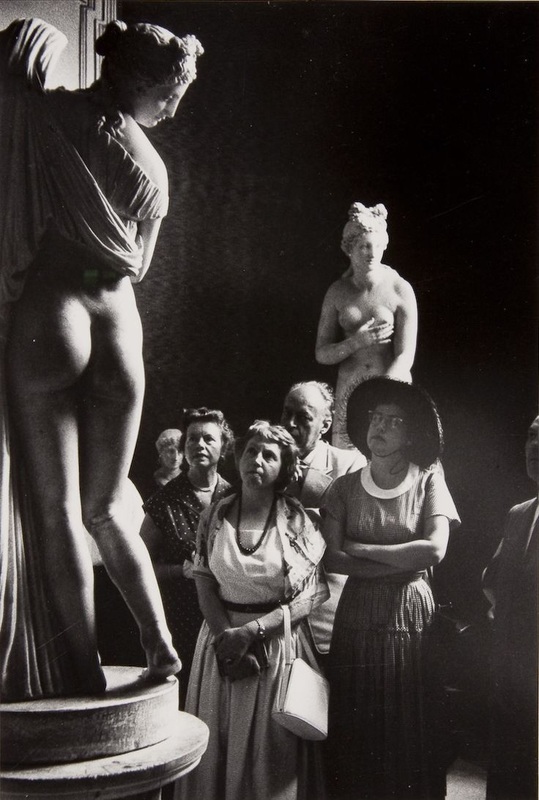






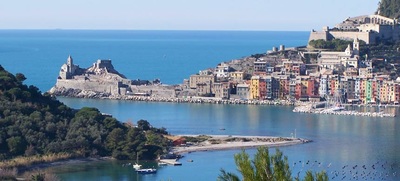













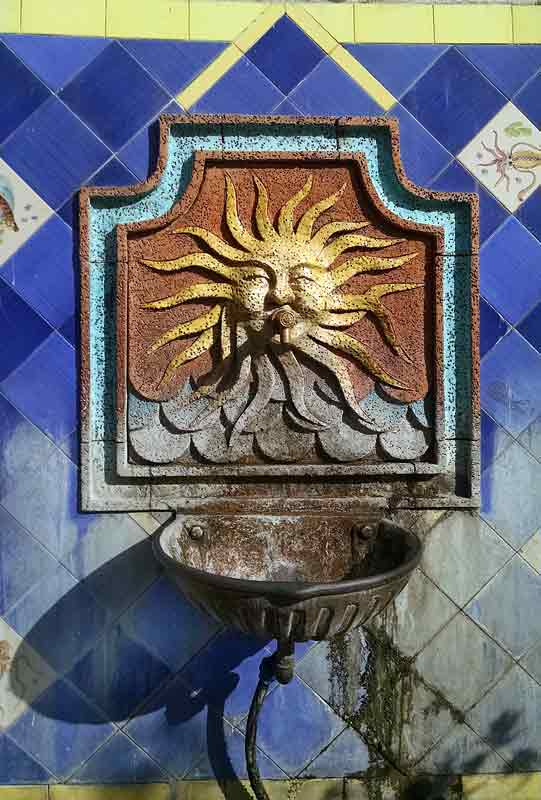



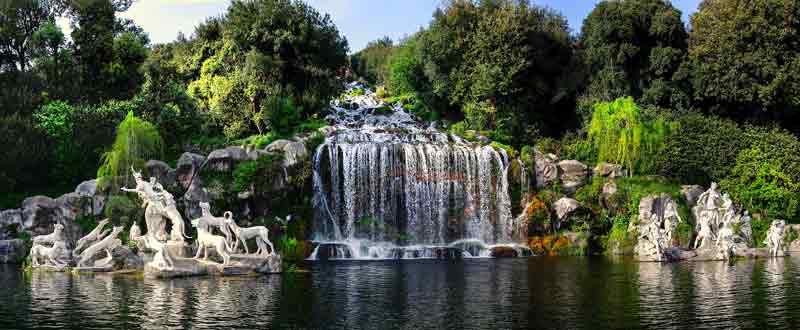






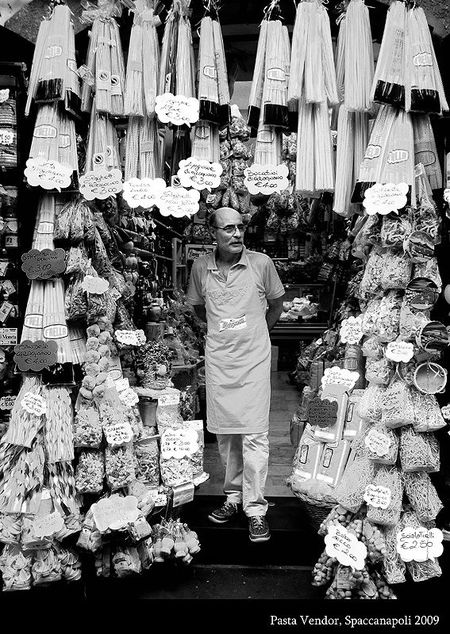













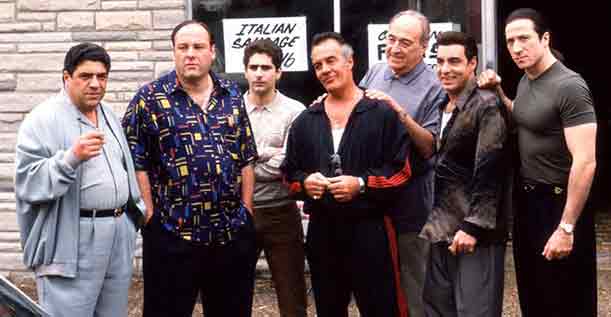

 RSS Feed
RSS Feed
